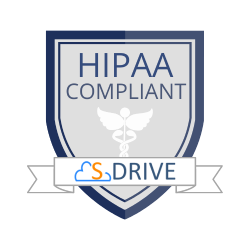Managing the document lifecycle can be challenging when documents live across disconnected systems. Teams spend hours searching for the latest version, waiting on approvals, or following up on signatures. These delays frustrate users and slow down important business processes.
Managing the entire document lifecycle in one platform solves these challenges. When everything happens inside Salesforce, teams stay aligned, and workflows stay on track. From the first draft to final storage, you can move files through each stage without switching between tools.
What the Document Lifecycle Covers
Every document goes through a set of stages. This journey, from creation to archive, forms the document lifecycle. In Salesforce, handling each of these steps in one system keeps work efficient and organized.
The core stages include:
- Creation – Drafting documents using real-time Salesforce data
- Routing – Sending files for internal or external review
- Signature – Getting approvals and signatures through eSignature tools
- Storage – Saving files with permission-based access
- Audit – Tracking the history and activity of each file
Each step connects to the next. A breakdown at any stage can lead to missed deadlines or compliance issues. Using a single platform helps you keep the entire process clear and consistent.
Create with Confidence Inside Salesforce
Creating the right documents is easier when the data comes directly from your CRM. Instead of copying details into a separate tool, users can build templates that pull information from Salesforce records. This ensures consistency across proposals, contracts, or onboarding forms.
Automating this first step sets the tone for a smooth document lifecycle. It reduces manual work, shortens turnaround times, and prevents costly mistakes.
Keep the Document Lifecycle Moving with Automated Routing
Once created, a document often needs review or approval. Emailing files back and forth wastes time and leads to confusion. Teams may work on outdated versions or forget who needs to take the next step.
Salesforce-based routing removes these problems. You can build workflows that notify the right people when it’s their turn to act. Each edit or comment is tracked, so nothing gets lost.
This clear path through the document lifecycle helps teams act faster and stay accountable.
Sign Faster with eSignature Integration
The approval stage often serves as the final hurdle before someone completes a document. With eSignature tools that connect to Salesforce, signing becomes fast and reliable.
Once a file is ready, you can send it for signature directly from the record. Signed copies attach back to Salesforce automatically, along with time stamps and user IDs. There is no need to email files or upload them later.
This real-time connection keeps your process compliant and traceable. Signatures become part of the same system that created and routed the file, closing the loop.
Store and Retrieve Files Without Leaving Salesforce
Documents don’t stop being useful after signing. Teams often need to revisit them for reference, reporting, or audits. When storage happens outside your CRM, it adds friction. People find it harder to find files, or they misplace them entirely.
By storing documents directly in Salesforce, you gain secure access based on roles and permissions. Each file stays attached to the relevant record. This cuts search time and prevents errors.
You also avoid duplication. Users always access the most recent version because there is only one source of truth.
Traceability Supports the Entire Document Lifecycle
Audits and reviews often happen in industries like finance, healthcare, and education. You need to show who touched a document, when they did it, and what changed.
When all document activity lives inside Salesforce, this tracking happens automatically. Each action ties to a user and time. You don’t need extra systems to check compliance. Your audit trail builds itself as you work.
This visibility supports better reporting and risk control. It also helps teams improve their workflows by showing where delays or breakdowns tend to occur.
Where S-Drive Brings It All Together
Salesforce offers a powerful foundation, but it needs the right tools to manage files at scale. That’s where S-Drive adds value.
S-Drive brings secure, scalable file management to Salesforce. It supports each stage of the document lifecycle through automation, storage, and integration. Whether you’re generating contracts, collecting signatures, or preparing audits, S-Drive keeps everything in one place.
Use Case Example
A real estate firm uses S-Drive to manage listing agreements and closing documents. Agents create agreements using Salesforce data, then route the files for internal review. Once ready, the system sends them for eSignature using an integrated solution. After signing, S-Drive stores the documents securely in Salesforce and records all activity for compliance.
Because the entire process lives inside one system, agents never lose track of documents. Managers stay informed. Clients receive documents faster. And during audits, files are easy to find and prove.
Streamline Your Workflow Today
Managing documents in different systems leads to lost time, broken workflows, and compliance risks. A connected approach inside Salesforce changes that. You gain speed, clarity, and control without extra tools or manual steps.
S-Drive helps your team manage the complete document lifecycle with ease. If you already rely on Salesforce, it’s the smart way to bring everything together.
Try S-Drive on AppExchange or contact us to learn more about how you can simplify your document management process.



